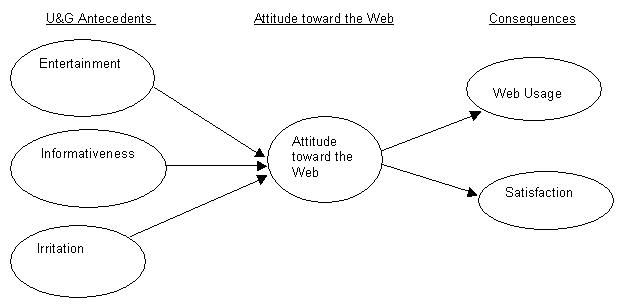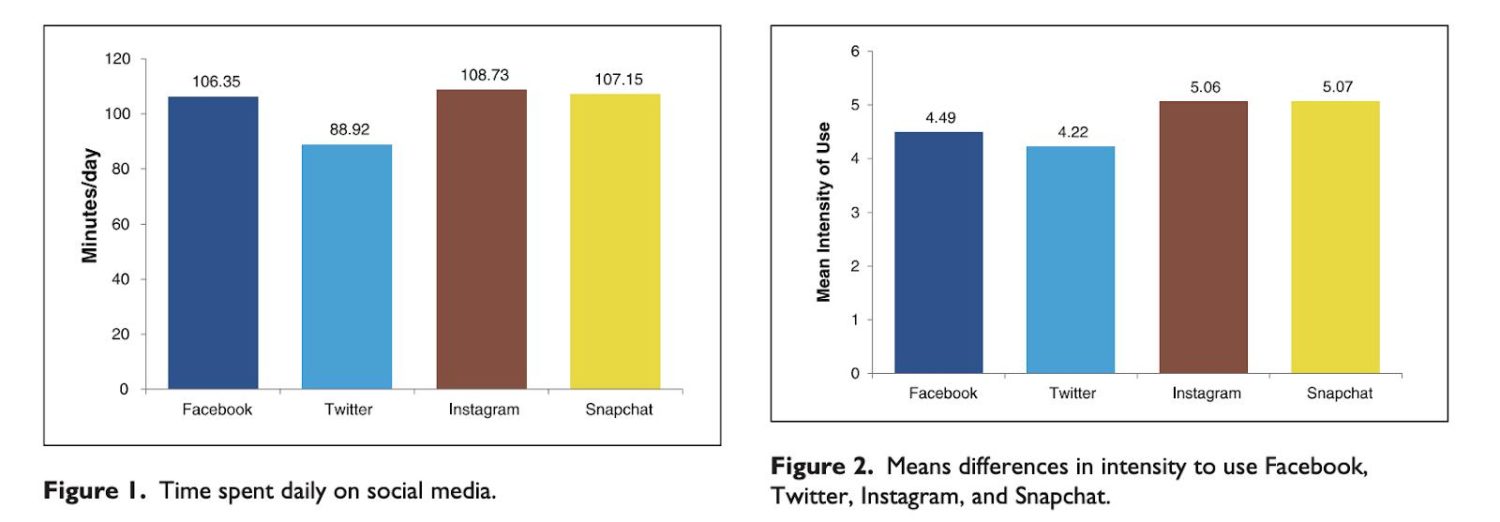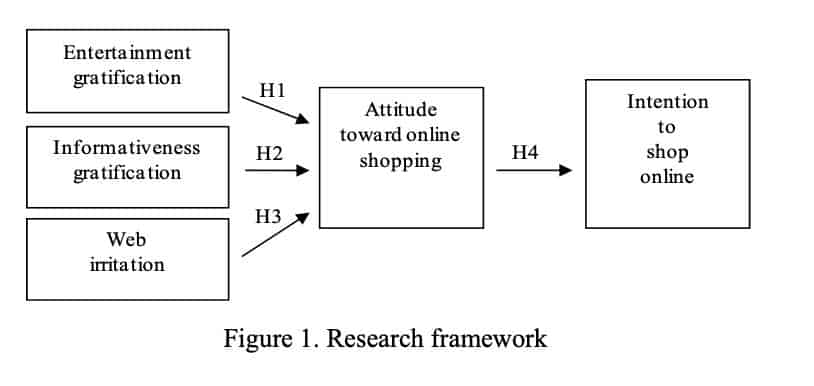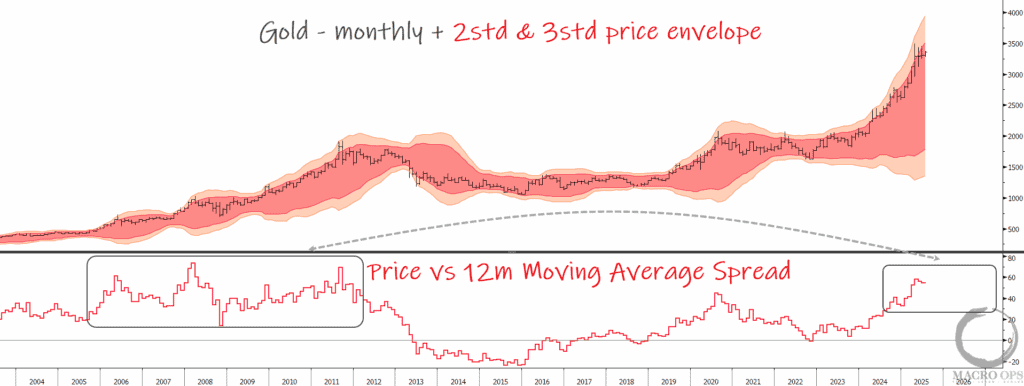Snapchat (SNAP) is on fire. The stock’s up 194% YTD with no signs of stopping. The SNAP bull thesis usually hinges on its user and revenue growth. Bulls are quick to note the company isn’t a “social media” company as much as it’s a “camera operating system”.
The largest hang-up for SNAP bears lies in the company’s ability (or inability) to keep its users in a sea of social media options. Why stick with SNAP when Facebook (FB) is trying to eat its lunch? How can SNAP compete against the likes of Twitter and Instagram?
Investors need another mental model for assessing SNAP’s standing in the social media hierarchy. The most applicable model we have is the Uses and Gratifications Theory (U&G Theory).
As we’ll outline in this essay, applying a U&G framework points to Snapchat as the most competitively advantaged social media platform.
This essay will answer the following questions:
-
- What is the Uses and Gratifications Theory?
- What Makes Snapchat Different?
- How does Snapchat Compare To Other Social Networking Sites (SNS)?
- What does this mean for Snapchat’s Future?
Uses & Gratifications: A Brief History
Developed by Katz, Blumler and Gurevitch in 1973, the U&G Theory tries to understand why and how people actively seek out media to meet their specific needs. In other words, it’s an audience-centered approach to understanding mass media.
U&G Theory tries to answer the question: What do people do with their media?
There’s five main assumptions with U&G Theory:
-
- The audience is active with a goal-oriented use of media
- The initiative in linking need gratification to a specific media medium rests with the audience member (individual)
- Media compete with other resources for the user’s need satisfaction
- People have enough self-awareness of their media use, interest, and motives to provide researchers an accurate picture of that use
- Value judgments of media content can only be assessed by the audience member
Everything in the theory flows back to the individual audience member. Not only does the audience consume content. They create and interact with content with a specific end goal in mind. By knowing the how and why behind why people create and consume media, we’re able to better understand which social media platforms will win.
According to Katz, there are eight types of social media uses and gratifications:
-
- Passing time
- Companionship
- Escape
- Enjoyment
- Social interaction
- Relaxation
- Information
- Excitement
Each media medium has a different hierarchy of gratifications. For example, people might value “escape” over “enjoyment” when listening to the radio. Yet favor “Information” over “relaxation” when watching a news program or reading an educational website.
To help narrow our focus, we can distill the U&G Theory into three dimensions. These dimensions flow into a consumer’s general attitude towards the web (or social media).
Entertainment
Most U&G research concludes that the highest value in media entertainment lies in its ability to fulfill a user’s need for escapism, hedonistic pleasure, aesthetic enjoyment, or emotional release (McQuail 1983).
In other words, the more entertaining you make your media, the more likely your users return. Groundbreaking stuff, I know.
This idea bleeds outside the core social media product, though. Think of advertisements on websites or apps. The more “fun” they are, the longer you interact. This is why companies like Sea, Ltd., and Shopee are gamifying the shopping experience.
Check out this example from a TechInAsia article (emphasis mine):
“Shopee has rolled out a variety of initiatives to create a holistic shopping experience for its customers. One is through gamification: Users can earn Shopee coins – the platform’s currency that can be exchanged for discounts – by playing simple in-app games like Shopee Shake.
Some games have a community element as well. In Shopee Farm, players water a plant and receive a reward when it is fully grown. Friends are able to water each other’s plants, which encourages players to rope others into the game and onto Shopee’s platform.”
Informativeness
Informativeness is also straightforward. The more informative people view a media source, the more value they place in that media source. This means the content is both resourceful and helpful. The better the information, the more consumers enjoy the medium.
Informativeness becomes even more important in a world inundated by 24/7 breaking news and endless streams of “real” vs. “fake” stories.
Irritation
Irritation is a negative factor in our three-dimensional equation. It deals with the extent to which social media is “messy” and “irritating” to its users.
What do you think an irritating website looks like? Probably one with large, flashy banner ads that aren’t related to what interests you.
Advertisers and social media walk a fine line between getting ads in front of users while avoiding potential irritation.
Done wrong, irritation leads to anxiety, distraction, and dilution of the human experience.
U&G Framework
When we combine these dimensions we get a framework that looks like this:
These three inputs (entertainment, informativeness, and irritation) explain 87% of the variance of attitude towards a media. In turn, the attitude towards a media translates into the amount of time, energy, and satisfaction a user gains from that media.
We can use this U&G Theory framework in our analysis of Snapchat and its competitors (Twitter, Facebook, and Instagram).
Let’s dig in.
What Makes Snapchat Different?
Narissra Punyanunt-Carter and team analyzed the relationship between college students’ satisfaction, addiction, needs, and uses & gratifications with Snapchat in 2017. You can read the journal article here.
In general, people use Snapchat for four main reasons:
1. Passing Time, Escape and Relaxation
Most people use social media to escape the mundane drag that is their life or current situation. Let’s face it. How many of us love waiting at the dentist office for a root canal?
2. Enjoyment and Excitement
Enjoyment is a big reason people use Snapchat versus Instagram. Snapchat offers emotional connections with friends you can’t get through text or email.
The article explains, “Photos as a form of communication increase our capacity for emotion and feeling of ‘together’”.
Bayer, Ellison, Schoenebeck, and Falk also revealed similar findings in their 2016 study. They found, “While Snapchat can lead to the excitation of certain negative emotions, Snapchat interactions were viewed as more enjoyable and were associated with more positive mood than other common communication platforms (e.g., Facebook, texting, email, calling).”
3. Information
Snapchat offers a layer of privacy and ephemerality other social media platforms don’t. In response, Snapchat users are more willing to share deeper, personal connections with their friends.
The article notes (emphasis mine):
“Users are more likely to share content and information that is more personal and representative of the “true” self. The reason for this is information that is seen as more private and less permanent will receive less judgment from the audience and allows for more intimate information to be disseminated.”
It gets to the idea of the “true” self versus the “best” self. I know I sound like some yoga guru from the Andes Mountains, but stick with me!
The article elaborates (emphasis mine):
“The reason for this lies, again, in the audience. With the audience being comprised of close friends and/or family, information, regardless of how mundane, will generate some interest in the audience members. Additionally, the lack of persistence and potential judgment that would accompany a similar post on other social media (e.g. Facebook, Twitter, Instagram, etc.) contributes to the idea that the “true” self can be represented rather than the “best” self as is the norm with other social media sites.”
Increased intimacy leads to more accurate (and better) information. Which also leads to increased entertainment. This creates a virtuous cycle for Snapchat users as they reinforce why they’re on the platform. To deepen personal relationships with their friends through intimacy and privacy.
4. Companionship and Social Interaction
Deeper, more personal information bleeds into increased companionship and social interaction on Snapchat.
Another advantage Snapchat has over other forms of communication is its ability to cut to the chase of what someone is actually saying.
 I first heard this idea from Turner Novak on a podcast. I’m paraphrasing him but he said something like, “The benefit of Snapchat is that instead of texting your friend asking him to come to the beach, you can send him a Snapchat photo of you at the beach with your friends and your dog.”
I first heard this idea from Turner Novak on a podcast. I’m paraphrasing him but he said something like, “The benefit of Snapchat is that instead of texting your friend asking him to come to the beach, you can send him a Snapchat photo of you at the beach with your friends and your dog.”
It’s the idea that a picture actually says a thousand words.
Not only that, Snapchat fulfills the millennial’s desire for instant gratification through messaging. Users can send a photo, see the other person open it, and receive a message back within seconds.
All the while receiving more information than a standard text message.
Turner’s thoughts are echoed in the academic research, too. The article notes (emphasis mine):
“These cues include nonverbal cues, hints to physical setting, and text overlays (e.g. basic text, emoticons, emojis, etc.) that give additional meaning to the photo. Again, this benefit comes from Snapchat’s use of photos as a communicative means. As mentioned earlier, photos “increase our capacity for emotion and to feel ‘together’” (Riviere, 2005). This finding is indicative of an emotional connectedness that comes from using photos to communicate with others.”
This is another stark difference between Snapchat and Instagram. Snapchat users aren’t trying to capture the “best” moment in time. Rather the real moment. Instagram posts rely on doctored events and best-life moments. Snapchat selfies are intimate expressions of what you look like on your worst day to your best friend.
A not-so-subtle difference leads to drastic changes in user intensity and behavior on each respective app.
Snapchat creates deeper connections with already-established relationships. In turn, users experience deeper levels of information and higher levels of entertainment as they see their friends in new ways, unhinged from the weight of permanence.
Snapchat vs. The World
One of the best studies on U&G Theory between the social media giants is Saleem Alhabash and Mengyan Ma’s paper A Tale of Four Platforms: Motivations and Uses of Facebook, Twitter, Instagram and Snapchat Among College Students?
Published in 2017, the paper explores U&G differences among the platforms to better understand the uniqueness of each platform.
Before diving into the specifics, let’s weigh each competitor:
-
- Facebook:60B monthly active users
- Twitter: 330M active users and 145M daily active users
- Instagram: 1B active monthly users sharing 40B+ pictures with an average of 3.5B daily likes
- Snapchat: 249M daily active users
What Drives Each Platform?
The article notes that different uses and gratifications drive people to use each social platform. For example, people used to use Facebook as a way to keep in touch with family and friends. That’s changed in the last decade. Now, people’s Facebook U&G center on Entertainment, medium appeal, and self-documentation.
Twitter’s main use and gratification is information sharing and social interaction. It was the leading indicator for time spent on the app.
Instagram’s users place less emphasis on connection and relationship. They care more about personal identity and self-promotion. Instagram users also use the platform for surveillance and knowledge gathering. In fact, surveillance was the strongest motivation for Instagram usage.
That’s a lot of angry ex-boyfriends/girlfriends.
Snapchat’s Edge: It’s All About Connection & Self-Expression
Snapchat’s edge is its ability to motivate users to create content and share it with their closest friends in a personal, private way. Snapchat users’ U&G revolve around relationship-building, not surveillance and self-promotion.
This is a better business model than other social media platforms. Why? Because it’s self-reinforcing. A platform that encourages intimate communication and self-expression creates deeper emotional ties.
Snapchat users look forward to opening their app because they know when they do they’ll have personalized messages waiting for them. It’s the opposite of what you see on Instagram. Depressed people scrolling through the “best versions” of their “friends” lives.
Knowing this, we can assume that people spend more time on Snapchat with greater intensity than other social media apps.
Let’s see if that’s true.
Answering The Two Biggest Questions
There’s two questions we need to answer as potential SNAP investors:
-
- What are the differences, if any, in use intensity, time spent daily, and motivations to use Facebook, Twitter, Instagram, and Snapchat?
- How do motivations to use Facebook, Twitter, Instagram, and Snapchat and time spent daily on the platform predict the intensity of platform use?
These questions either support or deny the thesis that more people will spend more time on Snapchat versus other apps in the future.
The results were as follows:
-
- Participants spent the greatest amount of time on Instagram, followed by Snapchat, Facebook, and then Twitter.
- The difference between Twitter and Instagram was significant (p < .05) and the difference between Twitter and Snapchat approached significance (p = .057).
- Participants expressed the highest intensity to use Snapchat, followed by Instagram, Facebook, and Twitter.
Here’s the biggest takeaway from the first question (emphasis mine):
“A trend in the prevalence of use motivations related to self-documentation, social interaction, entertainment, passing time, and convenience emerged across the four platforms. Snapchat takes the lead in these five motivations, followed by Instagram, Facebook, and Twitter, respectively. With regard to self expression motivations, we see that Instagram slightly leads, followed by Snapchat, Twitter, then Facebook, respectively. Snapchat takes the lead for medium appeal, followed by Instagram, Twitter, and Facebook, respectively.”
Snapchat dominated all five use motivations for social media users. Talk about a sticky product.
Onto the second question: How do motivations to use Facebook, Twitter, Instagram, and Snapchat and time spent daily on the platform predict the intensity of platform use?
Here’s the results:
-
- Gender and Class explained 4% – 13% of the variance in intensity.
- Females reported greater intensity to use Facebook and Instagram than males
- White males reported higher intensity to use Twitter (this explains my FinTwit feed)
- Greater intensity to use Twitter and Snapchat if they were in lower class standing.
- U&G Variables explained 51%-61% of the variance.
- Across the four platforms, entertainment was consistently the strongest predictor of use intensity.
- The intensity to use Facebook was significantly predicted by entertainment, time spent daily on the platform, self-documentation, and convenience (marginally), respectively.
- Entertainment, time spent daily, convenience, and gender, respectively, significantly predicted the intensity to use Twitter.
- Instagram use intensity was significantly predicted by entertainment, self-documentation, the number of users followed, self-expression, gender, time spent daily, and passing time, respectively.
- Entertainment, convenience, the number of friends, self-expression, and time spent daily, respectively, were significant predictors of the intensity to use Snapchat.
- Gender and Class explained 4% – 13% of the variance in intensity.
 Why does this study matter? It shows that people spend more time (with greater intensity) on Instagram and Snapchat than Facebook and Twitter.
Why does this study matter? It shows that people spend more time (with greater intensity) on Instagram and Snapchat than Facebook and Twitter.
It also revealed an inverse relationship between network size and intensity to use a social media platform.
In other words, the more “friends” you have on social media, the less likely you are to engage with that media. This makes intuitive sense.
How many people have Facebook accounts with thousands of friends? It’s a full-time job to maintain and actually communicate with that many people.
Or the number of random people you follow on Twitter. It clogs your Timeline and reduces the chances of finding the information you want.
That’s what makes Snapchat attractive. It isn’t about amassing the most friends. It’s about deep, personal connections with your closest friends through photo-based communication. That’s a sustainable model.
Why This Matters: Advertising Drives Revenue
The great thing about the U&G Theory Framework is we can overlay a bare-bones financial model on top. Snapchat generates roughly all its revenue from advertising.
It’s user retention model hinges on photo-based communication and self-creation. In turn, SNAP’s advertising model banks on enabling users to share branded content. They do this through filters and lenses.
Our re-created model looks like this:
This is important because SNAP reduces the “Irritation” aspect many advertisers face when promoting their brand on social media.
There’s countless examples of SNAP using branded lenses and filters to advertise:
-
- Gatorade Super Bowl Lens
- Taco Bell Taco Shell Lens
- Starbucks Frappuccino Happy Hour Geo-filter
- McDonald’s Geo-filters at Every Location
SNAP has the ability to become one of the greatest advertising revenue company of all time if they do these three things right:
-
- Entice brands/advertisers to create entertaining branded content
- Brand users inform SNAP users about products/services through content
- SNAP users experience little/no irritation with branded ads because they’re part of the entertainment experience
Snapchat is used by one of the hardest-to-reach demographics in America (18-35 year olds). Couple that with the millennial desire for instant gratification and you have the chance to meet the demographic where they are offering what they want exactly how they want it.
There’s a great study by Virgin Dones, et. al titled Millennial Consumers: Gratifications through the use of Snapchat and its impact on impulsive motivations of purchase.
The paper analyzes how content strategies employed by Snapchat impact the use, sharing, and motivations for impulse buying.
The study notes that content strategies like SNAP’s “capture the consumer as they extend beyond the perception of price (Alcazar 2010), and the image of the brand (Barboto and Sanchez, 2013).”
This goes back to what Packy McCormick discussed in his essay Software is Eating The Markets. Millennial consumers don’t care as much about price as they do the content delivery strategy of the product/service.
In turn, SNAP’s content delivery strategy (ephemeral, instant photo messaging) translates perfectly to impulse buying behavior. The article notes (emphasis mine):
“The Snapchat content model such as ephemeral offers, discount coupons, dynamic communication, and fresh, fun and real brand content can drive the purchase conversion faster.
This means that the purchasing actions are being influenced by the new social media with a different communication strategic approach in order to take advantage in decision making (Song & Yoo, 2016 & Heinrichs et al., 2011; Hastings & Saperstein 2010).”
And later …
“The data reflects that the use of Snapchat in Millennial to interact, manage relationships and information about brands, gratifies the unique needs of its users. This will result in greater receptivity which will positively impact the impulsive purchase motivation. In the same way this gratification of particular needs through use, will encourage its users to share these contents.”
It’s 2030: Welcome To AR
The fact is SNAP’s just getting started on its quest to capture the Millennial mind-share and infiltrate the world with AR-based ads. SNAP’s Lens technology turns any camera into an advertising machine, enabling small-large companies to effectively target the best demographic where and how they want.
Mark Jones of TechHQ writes of SNAP’s AR vision (emphasis mine):
“The end result is a fun, communal experience. But it hints at a world where entire cities will have multiple digital versions — or digital twins — of themselves accessible to anyone through a device. This opens doors for groundbreaking, new immersive experiences in gaming, advertising, and social media.”
Not only is SNAP augmenting the world we currently live in, but it’s also on a path to create new digital worlds. Worlds where users are free to create and express themselves in intimate, personal ways. In turn, advertisers will have the chance to meet customers in those moments of intimacy, creating greater entertainment, information and less irritation.
At 9% of Facebook’s current market cap, SNAP is in the early innings of its path to one of the world’s largest social media platforms. Using the Uses & Gratifications Theory framework, we can understand why SNAP should continue to take market share. Even better, we can use the framework to analyze future social media companies.
That’s why this essay is important. It offers another way to view these game-changing companies and business models that a purely financial model would miss.
SNAP also fits perfectly within our Digital Transformation thematic at Macro Ops. We’re hoping to scoop up shares on the next sell-off.
Sources (Further Reading)
-
- https://www.researchgate.net/profile/Jennifer_Bonds-Raacke/publication/5431122_MySpace_and_Facebook_Applying_the_Uses_and_Gratifications_Theory_to_Exploring_Friend-Networking_Sites/links/554e7a0308ae93634ec7033d/MySpace-and-Facebook-Applying-the-Uses-and-Gratifications-Theory-to-Exploring-Friend-Networking-Sites.pdf
- https://pdfs.semanticscholar.org/a38a/d6ccc670b73618b15044aaba5199e1b9fa41.pdf
- https://jiad.org/uses-and-gratifications-theory-and-e-consumer-behaviors-a-structural-equation-modeling-study/
- https://pdfs.semanticscholar.org/6a87/168a068a9f5725d1c8481b96dff3b5fdb7b7.pdf
- http://www.jasonswrench.com/wp-content/uploads/2018/03/Snapchat-Study.pdf
- https://journals.sagepub.com/doi/pdf/10.1177/2056305117691544
- https://lib.dr.iastate.edu/cgi/viewcontent.cgi?article=6283&context=etd











